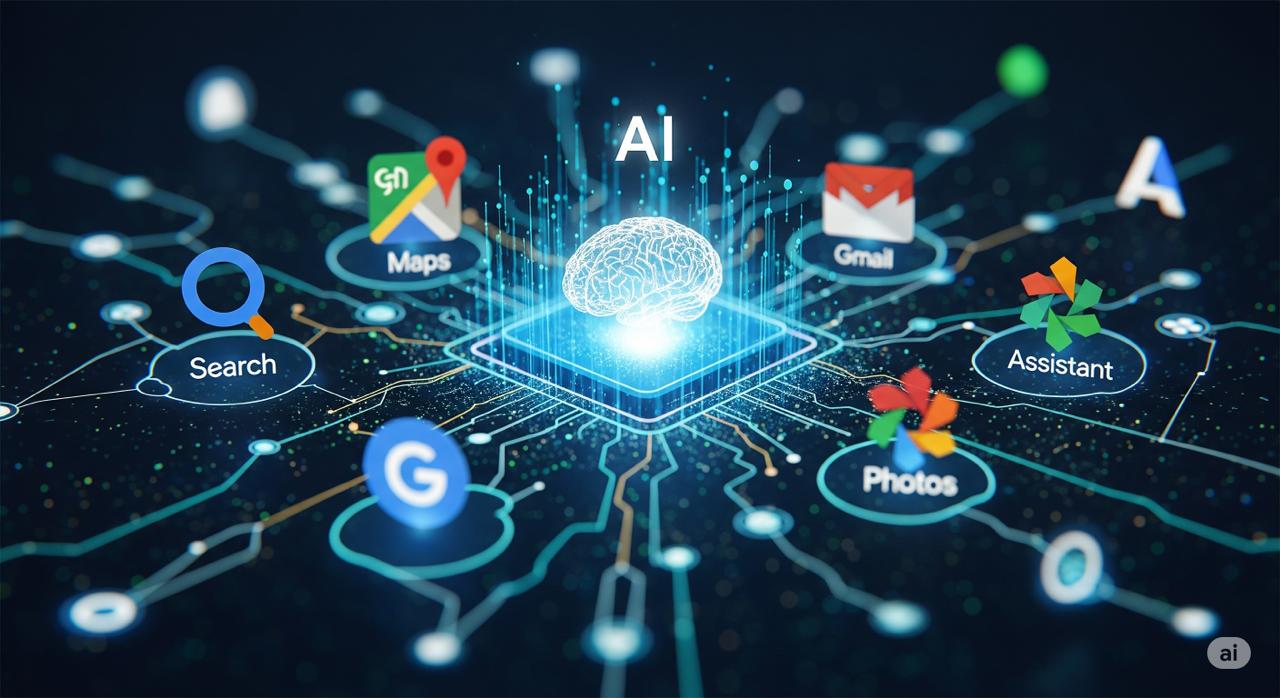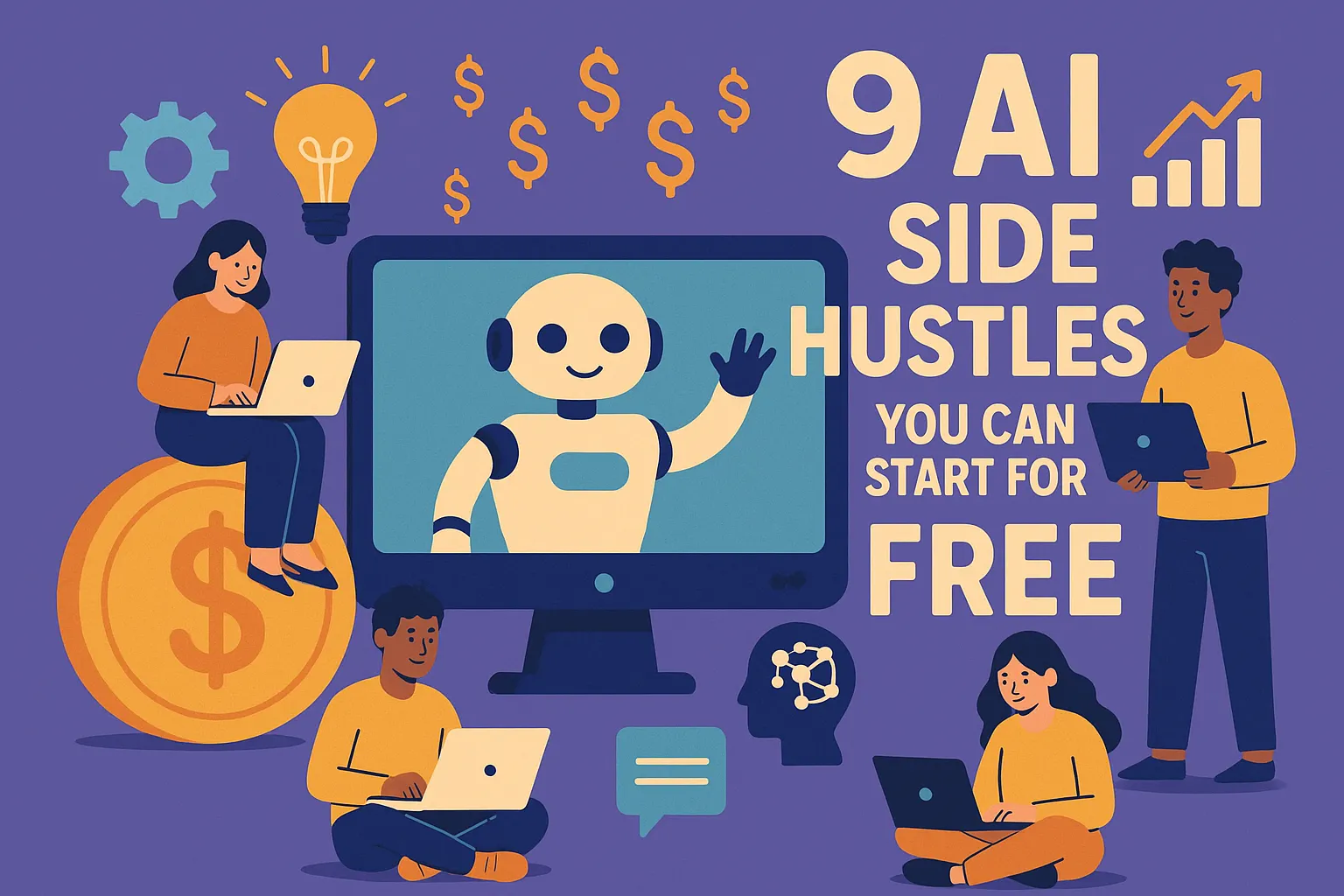Artificial intelligence is no longer a futuristic concept; it’s seamlessly woven into the fabric of our daily digital lives. Google, a pioneer in AI research and development, has integrated this transformative technology into a vast array of products and services, from the apps on your phone to the very backbone of the internet.
This report dives into 16 powerful Google AI applications that are not just smart tools, but genuine game-changers designed to enhance productivity, spark creativity, and simplify complex tasks. You might already be using some of these without even realizing the advanced AI humming beneath the surface!
The AI Powerhouses: Models and Platforms Driving Innovation
Before we explore the consumer-facing apps, it’s crucial to understand the foundational AI models and platforms that make them possible. These are Google’s heavy lifters, designed for developers and researchers, but their impact is felt by everyone.
1. Gemini (and its various versions like Gemini 2.5 Pro, Nano)
- Problem Solved: Breaking down complex information, facilitating creative generation, and enabling multi-modal understanding. Gemini is Google’s most advanced and versatile AI model, designed to process and reason across text, code, images, audio, and video. It’s the “brain” behind many of Google’s latest AI advancements.
- What you need to know: Gemini is not just a chatbot; it’s a family of models optimized for different tasks and devices. From the powerful Gemini 2.5 Pro for highly complex reasoning and massive context windows (like summarizing entire books or analyzing lengthy codebases) to Gemini Nano, which brings on-device AI capabilities directly to your smartphone for faster, more private features, Gemini is Google’s core intelligence layer, powering everything from content creation to coding assistance.
2. Vertex AI
- Problem Solved: Democratizing AI development for businesses. Vertex AI is Google Cloud’s unified platform for machine learning developers and data scientists. It simplifies the entire process of building, deploying, and scaling ML models, including state-of-the-art generative AI models like Gemini.
- What you need to know: While not an everyday app for consumers, Vertex AI is critical for businesses looking to integrate AI into their operations. It offers a comprehensive suite of tools, from custom model training to a “Model Garden” of pre-trained and open-source models, making it easier for companies to leverage AI for tasks like customer service automation, content generation, and data analysis.
3. Gemma
- Problem Solved: Providing lightweight, open, and responsibly-designed AI models for the global developer and research community. Gemma models are a family of open-source language models built from the same research and technology used to create Gemini.
- What you need to know: Gemma promotes innovation and responsible AI development by making powerful models openly accessible. Its smaller size makes it efficient for deployment on various devices and in resource-constrained environments, fostering wider experimentation and application of AI. This commitment to openness helps ensure AI’s benefits are shared broadly.
Everyday AI: Apps That Are Changing Your Life Now
Google’s AI isn’t just in the cloud; it’s actively improving the tools you use every single day.
4. Google Search (AI Overviews, AI Mode, Deep Search, Circle to Search)
- Problem Solved: Transforming how you find information by providing intelligent, synthesized answers and deeper research capabilities. AI Overviews directly answer complex questions with AI-generated summaries, reducing the need to click multiple links.
- What you need to know: Search is no longer just about keywords. Features like AI Overviews give you concise summaries directly in your results. AI Mode in Search Labs offers multi-step reasoning for more complex queries, while Deep Search can compile expert-level reports from vast amounts of information. Circle to Search on Android lets you circle, highlight, or doodle on anything on your screen to instantly get more information, bridging the gap between your digital and real-world queries.
5. Google Workspace (AI features in Gmail, Docs, Sheets, Meet, Slides, Vids)
- Problem Solved: Boosting productivity, creativity, and collaboration by embedding AI assistance directly into your work applications. This suite of tools streamlines tasks from writing to presentation design.
- What you need to know: Look for “Help me write” in Gmail and Docs to draft emails or documents. In Slides, AI can generate images and designs, while Meet can provide AI-powered summaries of your meetings. Google Vids, a new AI-powered video creation app within Workspace, allows you to generate high-quality video drafts from a simple prompt. These features are designed to save you time, reduce mental load, and help you produce higher-quality work.
6. Google Photos (Magic Eraser, Ask Photos, intelligent organization)
- Problem Solved: Simplifying photo management, enhancing images with intelligent editing, and helping you rediscover cherished memories.
- What you need to know: AI powers features like Magic Eraser (to seamlessly remove unwanted objects from photos) and Photo to Video/Remix (to automatically create engaging clips). The new Ask Photos feature allows you to converse with your photo library, asking questions like “Show me photos of my dog at the beach last summer” to quickly find specific moments and uncover insights from your vast collection. AI also intelligently organizes your photos, making them easily searchable by people, places, and objects.
7. Google Maps (AI-powered navigation, recommendations, Lens in Maps)
- Problem Solved: Providing accurate, real-time navigation and rich local information, making it easier to explore and navigate the physical world.
- What you need to know: AI in Maps predicts traffic conditions and offers optimized routes, saving you time and fuel. It also provides personalized recommendations for restaurants and attractions based on your preferences and location. Soon, you’ll be able to use Gemini with Maps to get highly curated suggestions for things to do, and even turn screenshots of places into organized lists within Maps, simplifying travel planning.
8. Google Assistant
- Problem Solved: Offering a voice-activated personal assistant that allows you to control devices, get information, and perform tasks through natural language commands.
- What you need to know: The Assistant relies heavily on advanced Natural Language Processing (NLP) to understand your requests, even with varying accents and complex phrasing. It integrates with smart home devices, calendars, and information sources, acting as a central hub for your digital interactions and helping you manage your day hands-free.
9. Google Translate
- Problem Solved: Breaking down language barriers for communication and information access.
- What you need to know: Powered by advanced Neural Machine Translation (NMT), Google Translate delivers more fluid and accurate translations than ever before. It offers real-time conversational translation, text translation, and even instant translation of text in images via Google Lens, making global communication and travel significantly easier.
10. Google Lens
- Problem Solved: Bridging the gap between the physical world and digital information by allowing you to search what you see using your camera.
- What you need to know: Google Lens uses AI-powered computer vision to identify objects, translate text, solve math problems, identify plants and animals, and find products. Simply point your camera, and Lens provides instant, relevant information or actions, turning your smartphone camera into an intelligent explorer.
11. YouTube (AI recommendations, automatic captions, Dream Screen, conversational AI)
- Problem Solved: Personalizing content discovery for billions of users and enhancing accessibility for a global audience.
- What you need to know: YouTube’s powerful AI recommendation engine keeps you engaged by suggesting videos tailored to your viewing history and preferences. AI also automatically generates captions for videos, improving accessibility. New AI tools like Dream Screen allow creators to generate backgrounds for YouTube Shorts using text prompts, making content creation more dynamic and accessible. Future integrations include conversational AI to help you learn more from videos while you watch.
12. Google Ads (Smart Bidding, Performance Max, Demand Gen campaigns)
- Problem Solved: Optimizing advertising campaigns for businesses, helping them reach the right customers more effectively and efficiently.
- What you need to know: AI is at the core of Google Ads’ most powerful tools. Smart Bidding uses AI to automatically adjust bids in real-time for optimal campaign performance. Performance Max allows advertisers to input goals and creative assets, then AI automatically generates and runs highly effective ad campaigns across all of Google’s channels (Search, Display, YouTube, Gmail, Discover). Demand Gen campaigns use AI to connect with consumers through immersive, relevant creatives, driving attention and action. These features maximize return on investment for businesses of all sizes.
13. NotebookLM
- Problem Solved: Revolutionizing personal research, note-taking, and information synthesis by providing an AI-powered assistant that understands your uploaded documents.
- What you need to know: NotebookLM is not a general chatbot; it’s a “source-grounded” AI. You upload your own documents (PDFs, Google Docs, web links, even YouTube videos), and NotebookLM can summarize them, answer questions based only on your sources, generate new ideas, create study guides, and even produce audio overviews. It’s a powerful tool for students, researchers, writers, and anyone dealing with large volumes of information, ensuring insights are directly tied to your provided context.
14. Veo (Generative AI for Media – Video)
- Problem Solved: Enabling the rapid creation of high-quality, cinematic video content from simple text prompts.
- What you need to know: Veo is Google’s advanced video generation model. You can type a description, and Veo will generate an entire video clip, complete with realistic physics and often even synchronized audio. This tool is a game-changer for filmmakers, marketers, and content creators, allowing for rapid prototyping, visualization, and production of video content without extensive traditional production resources.
15. Imagen (Generative AI for Media – Images)
- Problem Solved: Generating high-fidelity, photorealistic images from text descriptions, offering unprecedented creative possibilities.
- What you need to know: Imagen is Google’s state-of-the-art text-to-image diffusion model. Whether you need a specific type of artwork, a unique visual for a presentation, or just want to bring an idea to life, Imagen can create stunning visuals with incredible detail and quality from your text prompts. It’s a powerful asset for designers, artists, and anyone needing custom visual content.
16. MusicFX (Generative AI for Media – Music)
- Problem Solved: Democratizing music creation by allowing anyone to generate original music tracks from simple text prompts.
- What you need to know: MusicFX lets you describe the kind of music you want – a genre, mood, instrumentation, or tempo – and it will generate unique audio clips. This tool opens up new avenues for musicians, content creators, and even casual users to experiment with and create custom soundtracks for videos, podcasts, or just for fun, without needing musical expertise.
Google’s relentless pursuit of AI innovation is not just about building smarter technology; it’s about building technology that truly serves and empowers people in their everyday lives. As AI continues to evolve, these 16 apps offer a compelling glimpse into a future where technology is even more intuitive, helpful, and transformative.




